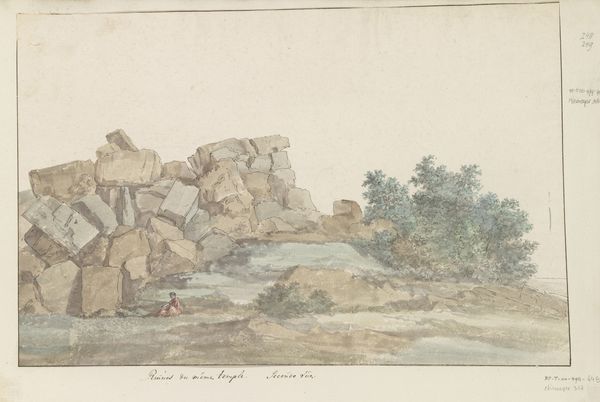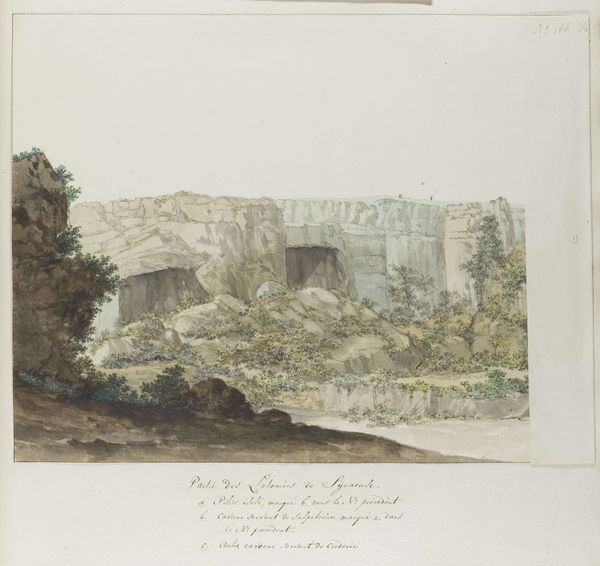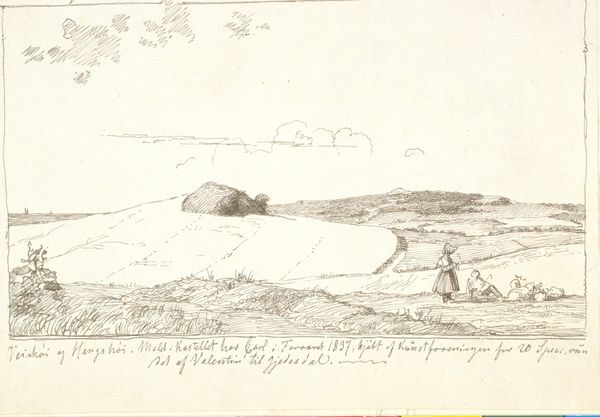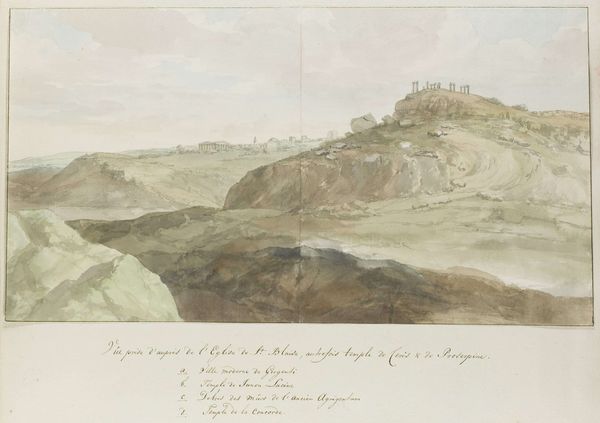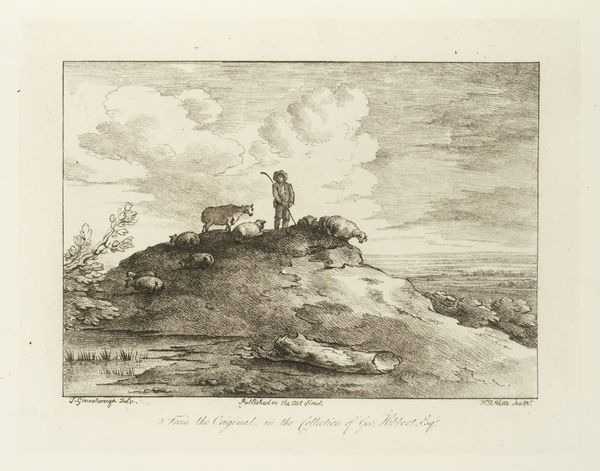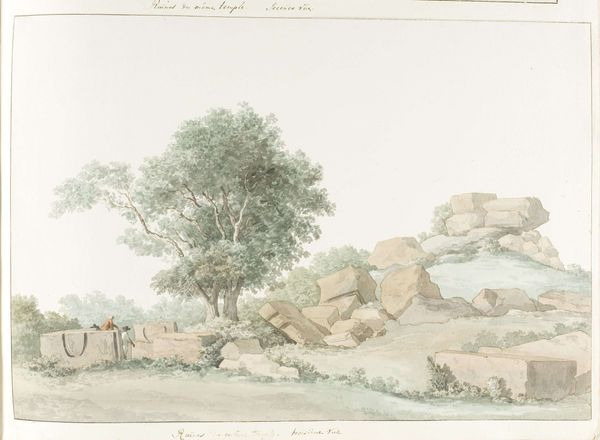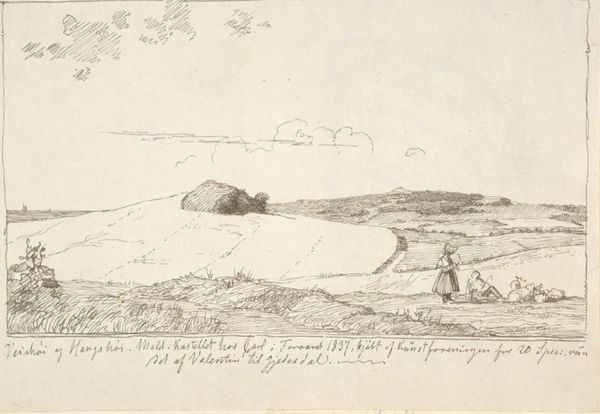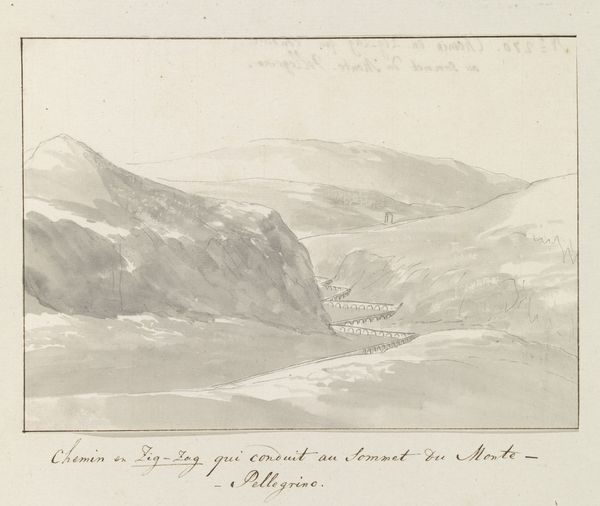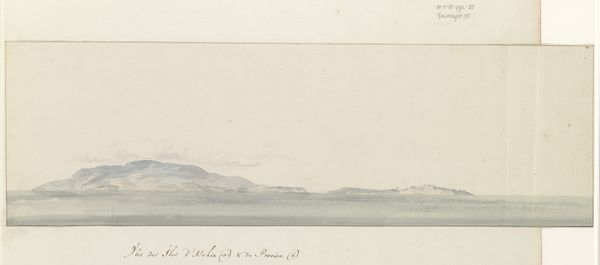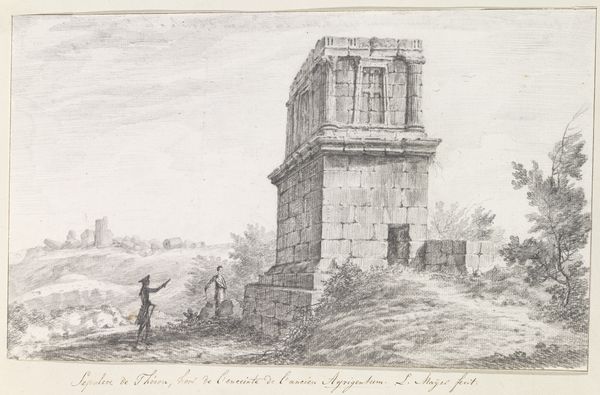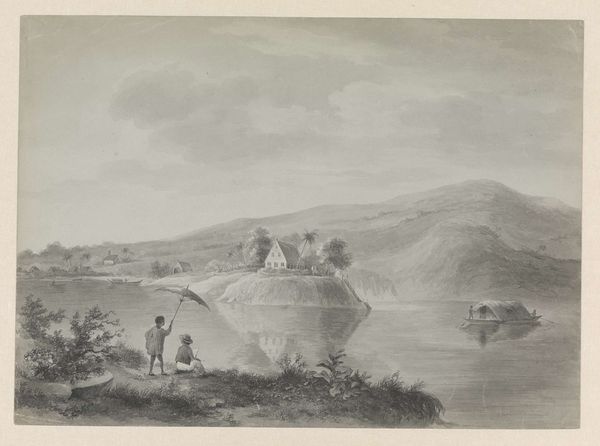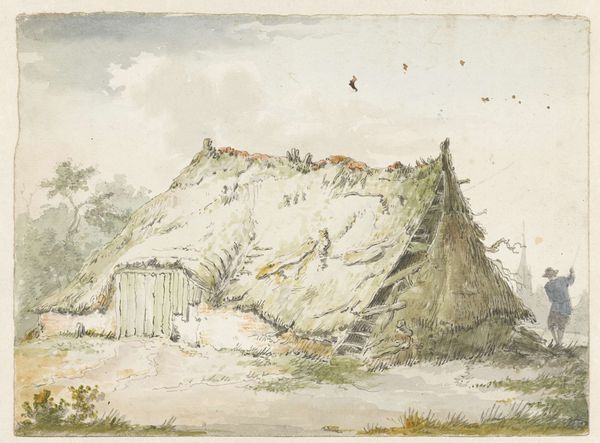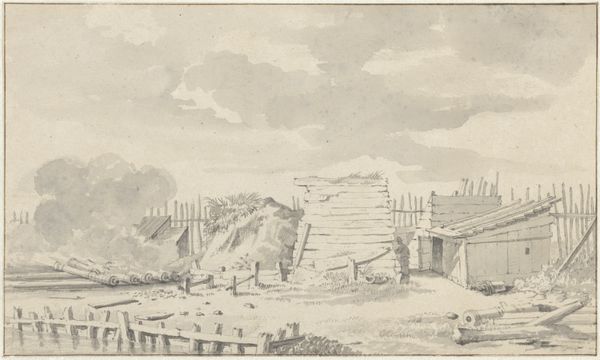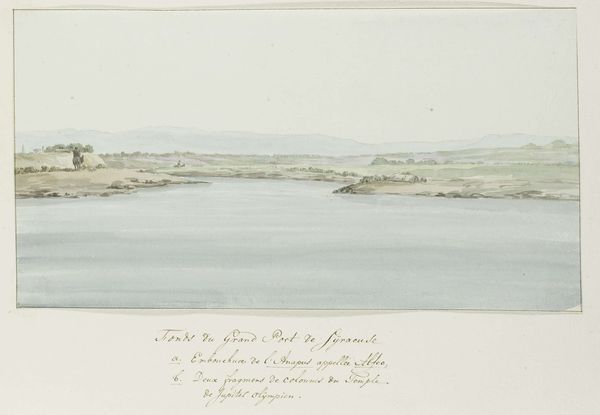
drawing, watercolor, pencil
#
drawing
#
neoclacissism
#
pencil sketch
#
landscape
#
etching
#
watercolor
#
ancient-mediterranean
#
pencil
#
history-painting
Dimensions: height 232 mm, width 380 mm
Copyright: Rijks Museum: Open Domain
Curator: We're looking at a drawing by Louis Ducros, titled "Panorama met monument van Feniciërs of Carthagen op eiland Gozo," created around 1778. It’s held at the Rijksmuseum. Editor: Immediately, the muted palette draws me in. It’s stark, almost melancholic. The massive stones dwarf the figures. I’m wondering what material are those monuments. Curator: It is believed to depict an ancient site, possibly Phoenician or Carthaginian, located on the island of Gozo. Ducros, known for his landscapes and vedute, captured the monument using pencil and watercolor. We also see indications of an etching. It reflects the era's fascination with classical antiquity. What could be its relevance to current understandings of material legacy? Editor: The materiality speaks volumes. The sheer size of those stones signifies an immense amount of labor—human labor to extract, transport, and assemble them. And of course there's the consumption aspect: those stones took material resources from the Earth, reflecting a civilization's resource management, values and social hierarchy of ancient civilizations. What did that amount of effort and energy signify for the society who built it? Curator: Exactly. It serves as a reminder of empires risen and fallen, empires built often on extraction and enslavement, on hierarchical values of both labor and the significance of power, gender and racial identity. I think we can connect its monumental aura, the visible efforts, with ideas related to identity formation and imperial propaganda through art and architecture. It all comes to who can decide about the shape and significance of materials, the meaning imbued, and thus, whose voice prevails. Editor: Absolutely. It’s about the act of making as an assertion of dominance. Looking closer, you can even analyze it technically—how Ducros used shading and light to convey the texture and density of those building materials, a language which speaks not just of aesthetic taste, but, in its ability to evoke emotion, speaks to questions of who controls how that story is remembered, constructed, distributed, consumed, and ultimately archived into what is presented today. Curator: Yes, by depicting the monument in ruins, perhaps Ducros comments on the transience of power and glory. The scene hints at the power struggles and shifts in identity of colonial interests between ancient times and his own time. Editor: This piece invites us to reflect on the power dynamics embedded within the built environment. A silent yet very present materiality of human imprint. Curator: A very compelling reflection, indeed, about historical and modern narratives around material structures.
Comments
No comments
Be the first to comment and join the conversation on the ultimate creative platform.
